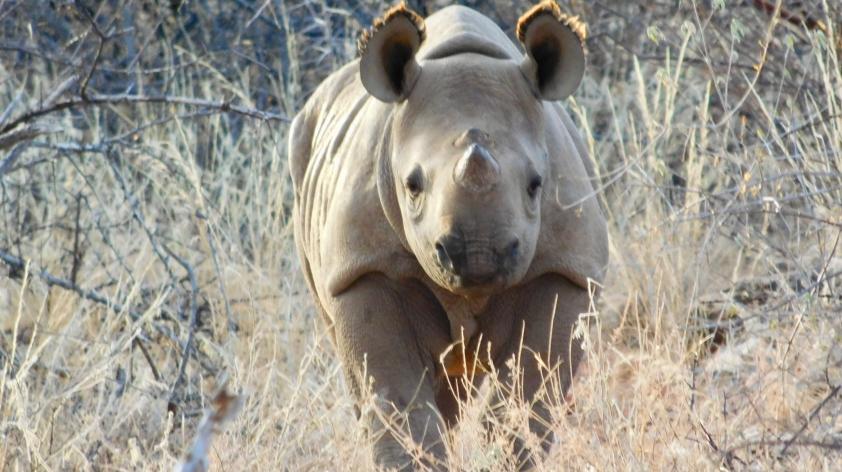
Water for Rhinos
In 2010, a comprehensive ecological assessment of Sera Community Conservancy was conducted in order to establish the estimated ecological carrying capacity for black rhinos in the 355-square kilometers (km) covered by Sera. Based on this assessment, the maximum carrying capacity was estimated to be 65 black rhinos, the maximum number of black rhino to be maintained for optimal reproductive performance. In 2015, the Sera Rhino Sanctuary was established, the first community conservancy in East Africa to operate a sanctuary dedicated to the conservation of the critically endangered black rhino.
Currently, there are 13 black rhinos within the sanctuary, ten adults and three calves. There is one permanent spring located on the western side of the sanctuary. Although saline levels in the water remain high, the limited availability of water elsewhere in Sera means most of the rhinos inhabit this area. As a result of the high concentration of both rhinos and other wildlife in this western section of the sanctuary, considerable pressure on the flora has been created.
The good news is that funding provided by San Diego Zoo Global (SDZG) to Sera Rhino Sanctuary has allowed wildlife to expand into the eastern part of the sanctuary, an area previously largely closed to them due to limited availability of year-round water. In 2014, through SDZG support a new water supply was created. Until then there existed a natural dam named Lchorosowan which emptied during the dry season. With the benefit of SDZG funding, the capacity of the natural dam was increased: a concrete waterhole built adjacent to it, fed by water from a solar powered pump through a newly laid 1.9km water pipeline. “The water pipeline has improved the concentration of wildlife greatly in the eastern part of the sanctuary,” said Reuben, manager, Sera Conservancy.
In March 2013, three sand dams were also built in the sanctuary to collect rain water with support from USAID. The increased water availability throughout the sanctuary, from this initiative and the funding provided by SDZG, is reducing pressure and tree damage to habitat in the western areas of the sanctuary. This is increasing sustainability for the Sera’s wildlife.
Lochero’s story illustrates the positive impact of these projects. This male rhino had been repeatedly fighting with another large male on the western side of the sanctuary. Due to the new water availability, he was able to find a new territory in the eastern part of the sanctuary, where three other rhinos have also re-located. It is fantastic to see rhinos being able to move their territories now that there is wider availability of water resources across the sanctuary.
In more wonderful news, a rhino calf was born on August 16. Naitamany had her second calf, a female who has since been named Ntibikwa by Sera rhino rangers. Her name roughly translates as “long-awaited” in Samburu, and was inspired by the long period of time that Naitamany hid her calf from rangers—a total of four days.
Isabelle Parsons is a SDZG consultant to Global Partnerships living in Laikipia County, Kenya.













